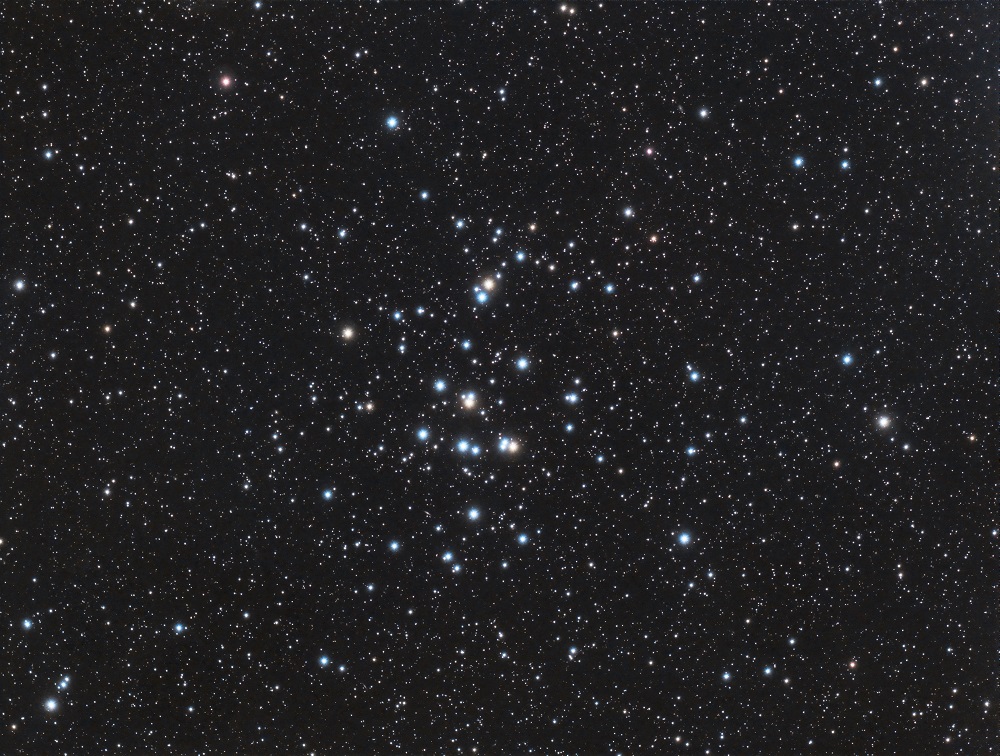Teaching the night sky to the blind and low-vision community opens up new ways of experiencing the cosmos.
I looked up at the clear spring sky, drinking in photons from the Big Dipper. Then I closed my eyes, feeling the wind, and imagining ancient starlight greeting my eyelids. What’s astronomy like if you’re blind?

Snagging a binocular view of the Beehive Cluster, I marveled at this perennial favorite, harbinger of sunny days and a buzzing in the flowers. The night breeze tickled the windchimes on the porch, a perfect musical transcription of the view. If M44 had a soundtrack, the gently ringing chimes would be it.
With well over two decades of avid backyard astronomy under my belt, complete with an assortment of telescopes and fancy optics, reimagining my experience with astronomy is suddenly forefront in my mind. In a few weeks I’ll be hosting my first class on astronomy for school children . . . and they’re blind.
So, I’ve been thinking hard. Can I interpret the night sky effectively for them? Perhaps the next rock star astrophysicist is a blind 6th grader, just waiting to be intrigued by a field they hadn’t even thought accessible. To love something, though, one must meet it first. What tenets should the encounter rest on?
People tend to be more engaged when they feel they can contribute, and luckily, there’s much about astronomy that doesn’t include vision. After all, we can’t see the interiors of planets, and black holes by nature elude visual observation, yet these fields of study are brimming with activity and unanswered questions.
In efforts to open the sky to the greater blind and low-vision community, a genuine invitation to serious participation is not only straightforward, but to everyone’s benefit. Who knows who will make the next breakthrough, and a larger talent pool lifts everyone. Different perspectives can often lead to different results. Hawking or Einstein didn’t punch their Messier Marathon cards, after all. Yet, a lifelong passion or even a simple love of space often requires a hook.
The “ah-ha!” moment in my observing career came from seeing Jupiter and Saturn through an old-school 60mm refractor. Happy for days, my 11-year-old perspective was suddenly as big as the sky. “Those planets are really out there.” Not that I had doubted it, but the images I’d seen in books remained in the intellectual realm, not feel-it-in-your-bones reality. Yet, to even attempt to process the enormity of astronomy, we need both.

Chandra X-ray Observatory
As an adult, I spend long nights hunting faint galaxies with big scopes. The mere glimpse of them is not much to write home about, yet the theoretical knowledge of what they are rounds out the experience. Knowing what you’re (barely) seeing makes it click. Preparing this class for the blind kids has made me realize how much of my observations are thought-based as opposed to purely visual, and I question if I’m missing more ways of experiencing this marvelous universe.
For example, NASA has converted some of their photos into sonic representations. One of these, a “picture” of the heart of the Milky Way, combines visible, infrared, and X-ray wavelengths (mostly transcriptions of light beyond our perception to begin with). The sounds struck me with a different kind of detail than when I had viewed the image. Here’s another one of the Chandra Deep Field South. Now I’m paying more attention to the way a clear night feels, to how my mind’s eye might journey to a distant world, or even to the owls hooting in the forest as I navigate a telescope through the galaxy fields.
A blind colleague is helping me prepare for the class, and she told me, “I hear the moon smells like gunpowder.” Later she asked, “But what does it look like?” Grasping at straws, yet delighted with the question, I whipped out something about a ping-pong ball with scuff marks. (May the poets forgive me.) Gradually, the explanations are becoming more refined. Craters? A friend suggested a pothole as a reasonable analogy. White (full-spectrum) light? All of the strings on a guitar strummed at once, yet able to be separated into individual “colors” of sound.
It’s my hope to show these kids the sky in a way that lets them fall in love with it, just as we all have in our own ways. I suspect they'll open many horizons for me, too.
How do you interact with the universe?
Josh Urban is an avid backyard astronomer and educator who’s gradually realizing there’s more to the sky than meets the eye. He lives near Washington, DC, with five telescopes and a few guitars.
 4
4
Comments
JamesEdgar
March 31, 2021 at 5:12 pm
Hi Josh, I have a CNC carver that I use to create 2-D images for people who are seeing impaired, so they can feel planets, galaxies, eclipses, and even the aurora.
If I had an email address, I could share some examples.
Mine is [email protected]
You must be logged in to post a comment.
[email protected]
April 25, 2021 at 12:49 am
Hi!
I'm a Grade 9 student in India, and I plan on becoming an astrophysicist when I grow up, despite being visually impaired! I'm not exactly blind, but have a vision of 20/400. My lobe for astrophysics mainly stens from my love for math, and reading Neil De Grasse's 'Astrophysics for people in a hurry' during the lockdown period drew me to this majestic discipline.
You must be logged in to post a comment.
JUrban
May 24, 2021 at 9:00 am
Hey there! That is AWESOME! I'm so glad to hear that you're pursuing such a fascinating topic. Please make sure to share your journey along the way. It's great for all of us to hear how the Universe is explored from different perspectives. And, please let me know if I can be of assistance along the way. I just started a community page on the subject: https://theobservatory.locals.com/ Rock on!
You must be logged in to post a comment.
Tim-Robertson
November 20, 2021 at 12:14 pm
Josh- I host the Observers Notebook podcast and would be interested in having you on the discuss your work in astronomy with the visually impaired. You also could use the opportunity to promote your podcast.
You can contact me at [email protected]
Clear skies,
Tim
You must be logged in to post a comment.
You must be logged in to post a comment.